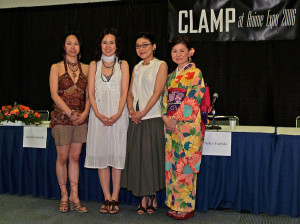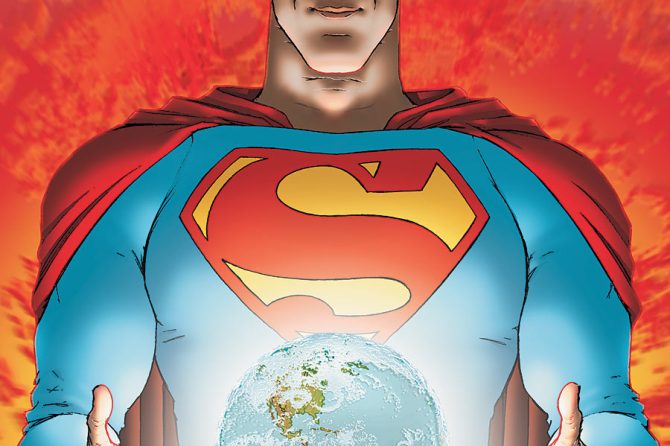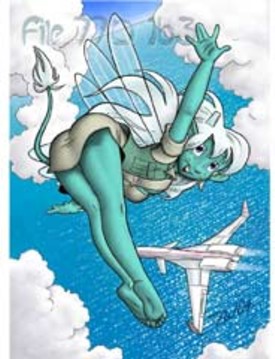There are many expressions of fandom that cross genres and cultures – fan fiction, fan art, even cosplay. But there is one form in particular that is distinctly Japanese, both in its origin and in its current form, and that is doujinshi. The term refers to anything that is self-published (“doujin” means “same person”), but in fandom circles, it most frequently means manga drawn by non-professional mangaka – whether that be original stories or comics based on pre-existing, copyrighted work. And artists have a huge market in Japan at which to sell this work: the twice-yearly Comic Market, often known as ComiKet.
Doujinshi span all genres and styles, but because there is no outside publisher – and are therefore no restrictions – it is very common for doujinshi to have sexual themes that would not otherwise be permissible for publication. And often times, these doujinshi are using beloved characters from other media – Naruto, One Piece, Sailor Moon, Yu-Gi-Oh!, and yes, even Harry Potter – just to name the very very tip of this colossal iceberg. Jason Thompson’s Manga: The Complete Guide talks about how artists are able to use copyrighted material without legal ramifications:
Such material is normally tolerated by Japanese publishers even though it infringes on copyright. There are several reasons for this: Japanese copyright law, unlike American law, does not require the copyright holder to pursue every single violation or risk losing the copyright; Japanese copyright litigation is time-consuming and generally awards lesser amounts to the plaintiff; and cracking down on doujinshi may anger fans and damage publishers’ relationship with a huge section of the market. Most publishers would much prefer to have fans on their side; some exhibit at Comic Market (though they are confined to a small area), and many manga and anime are specifically scripted to be doujinshi-friendly, such as Shinji and Kaoru’s suggestive sleepover in Neon Genesis Evangelion.
Doujinshi are, by nature, hit or miss in terms of quality and content. If you’re looking for some old-fashioned porn-without-plot and aren’t too picky about craftsmanship, you’ll have no trouble finding everything you could ever want, and with any set of characters you could ever want, too! But many professional mangaka start out as doujinshi artists (hugely popular all-female manga team CLAMP comes to mind), and many publishers actually scout out the best artists and storytellers from within places like ComiKet in order to find rising talent.

They are all that is left of the original 11-person doujinshi circle Clamp Cluster, which started making comics in the mid-80s.
So how does this work from a Western perspective? Well, since doujinshi aren’t technically “published” legally, very few of them have made their way Stateside, though a multitude can be found on the internet, translated by fans. And in general, making fan comics isn’t a very popular past time for Western fans. Surely it occurs – though mostly through people who have been exposed to this particularity of Japanese fan culture. On occasion, a franchise will rope in talented fans to write novels or draw comics within their universe (Star Trek comes to mind, considering that fandom really knew how to capitalize on fan works right from the beginning).
And it just wouldn’t work here. The copyright laws are strict, publishers are possessive, and though many fans are fans of comic books, comics as literature are not pervasive enough in our culture to merit such an event as ComiKet , which frequently hosts over 100,000 attendees (and that figure is from 1989, so surely it has increased). As a Westerner, with a Western sensibility of copyright and creative ownership, what do I think of it?
I love it. I wish it was viable for me to self-publish comics – of any sort, copyrighted material or not – and get a legitimate profit and fanbase from it. In many ways, the webcomic is the West’s answer to doujinshi, but it took Westerners more than 40 years to pick up on the idea of mass-market self-publishing. I do believe that copyright should be protected, certainly, but doujinshi artists who are creating fan works are not malicious; they do not claim to own the creative material, nor do they make half as much money as the original author or the publisher (the self-published books go really, really cheaply much of the time, since some are literally just photocopied like ‘zines). Doujinshi are created out of affection, and though they do bring in some small profit, I see them in much the same way as I see fan art or fan fiction: a really great way to get practice in an area without having to start totally from scratch. A lot of American fans have actually taken to making fan comics, though they will never get recognized or paid for their efforts – which isn’t a bad thing in and of itself, but as someone who has made attempts at drawing comics, I can tell you that drawing one entirely by yourself – especially one of quality – is a Herculean effort that deserves something. Even professional mangaka have assistants, after all.

I think that the existence of doujinshi and its huge success and popularity really speak to the immense impact and prevalence of comic books in Japanese culture on the whole. Comic books are uniquely suited to reaching out and enthralling an audience, and fans are extremely excited about their favorite doujinshi and talk about doujinshi artist circles the way some American comic fans can recite details about every separate Batman story arc. This is the one expression of fandom that is uniquely Japanese, despite its small spill-over to anime fans in the West, and it will probably remain distinctly Japanese given the circumstances of its existence.
Thankfully for those of us who do not read Japanese/can’t make it to ComiKet/wouldn’t even know how to go about obtaining doujinshi, there are plenty of kind-hearted fans out there to share works that they have translated, and some physical copies of these books can be found at anime conventions the world over. While I generally encourage people to try new things, and new comic books being one of them, I would like to warn everyone to take the age-rating labels on any doujinshi very seriously! About 95% of what you’ll find out there isn’t suitable for kids in one way or another – but there are certainly gems to be found, and wouldn’t it be cool to say that you were reading and (morally) supporting an artist before s/he made it big in the manga world?











Recent Comments